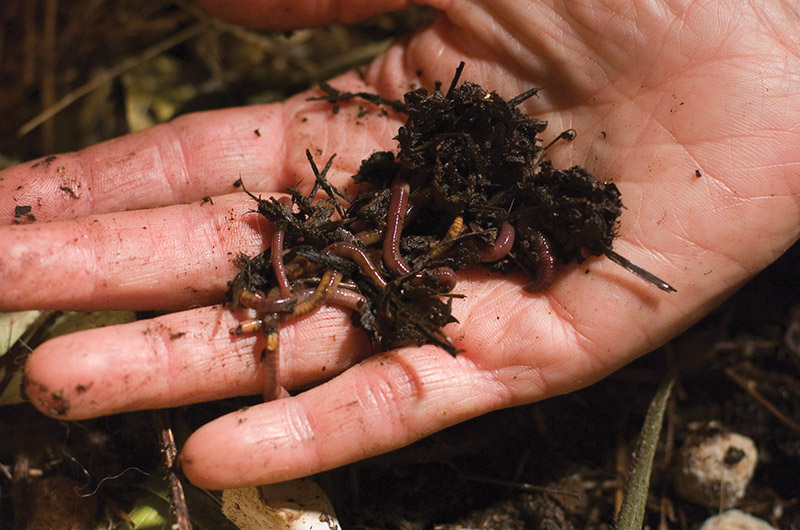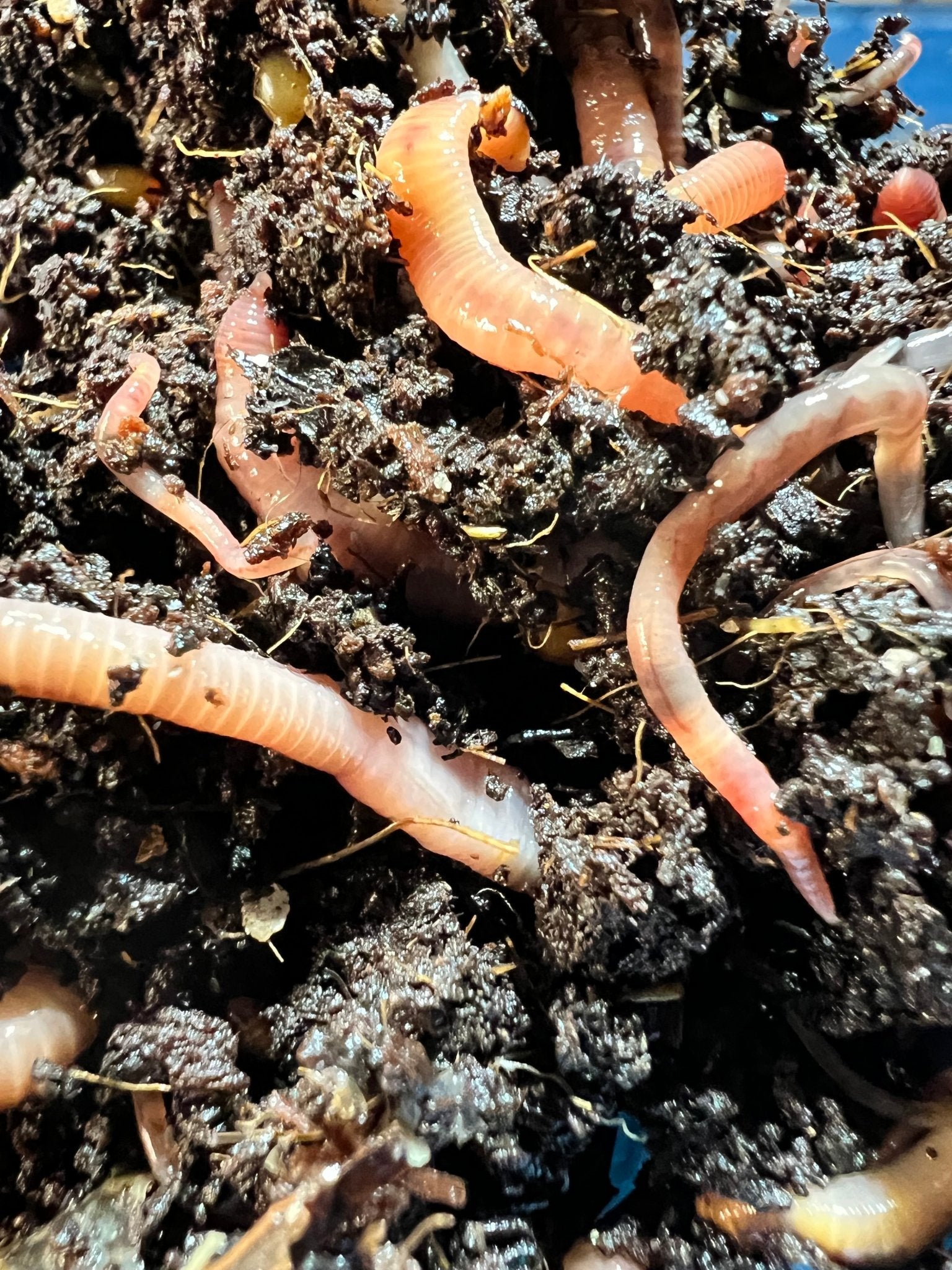Red Wiggler Worms - Natural Solution for Environmentally Friendly Composting
Making The Most Of the Conveniences of Red Wiggler Worms: A Comprehensive Handbook for Home Gardeners and Urban Farmers
In the world of sustainable horticulture techniques, red wiggler worms stand as unrecognized heroes, silently transforming organic waste right into nutrient-rich castings that can work marvels for dirt health and wellness. As home garden enthusiasts and metropolitan farmers increasingly look for economical and environmentally friendly ways to boost their yards, the prospective benefits of taking advantage of the power of red wigglers can not be overemphasized. From lessening cooking area waste to cultivating healthier plants, the use of these humble creatures offers a huge selection of benefits. By exploring the intricacies of how to successfully care for and make the most of the advantages of red wiggler worms, individuals can open a wealth of possibilities for enhancing the sustainability and efficiency of their horticulture ventures.
Recognizing Red Wiggler Worms
Red Wiggler worms, renowned for their efficient composting capacities, are a types of earthworms extensively used in vermiculture practices. These worms, scientifically understood as Eisenia fetida, prosper in rotting organic material, making them perfect candidates for composting.
One trick feature of Red Wiggler worms is their reproductive rate. These hermaphroditic creatures possess both women and male reproductive organs, permitting them to recreate rapidly under positive conditions. A mature Red Wiggler can generate several children in a brief period, ensuring a consistent population within a composting system.

Setting Up a Worm Bin
When establishing a worm container for vermiculture purposes, proper prep work and focus to detail are vital for developing a conducive environment for Red Wiggler worms. Begin by choosing an ideal container for your worm bin.

Location the worm bin in an amazing, dark area far from straight sunshine and severe temperatures. On a regular basis monitor the wetness levels, adding water if the bed linen feels completely dry or half-cracked. Feed the worms a balanced diet of vegetables and fruit scraps, avoiding citrus fruits, onions, and spicy foods. By complying with these actions, you can establish a thriving worm bin that will successfully process natural waste into nutrient-rich vermicompost for your yard.
Feeding and Preserving Worms
Making sure a nutritious and balanced diet plan is critical for the health and productivity of Red Wiggler worms in a vermiculture system. Red Wigglers are ravenous eaters, capable of consuming their very own body weight in natural matter daily. To keep a growing worm populace, it is vital to provide them with a range of food scraps such as vegetables and fruit peels, coffee grounds, tea bags, and smashed eggshells. It is crucial to avoid feeding them citrus fruits, onions, garlic, dairy products, meat, and oily foods as these can be hazardous to the worms or cause unpleasant odors in the bin.
Appropriate dampness degrees are additionally important for the wellness of Red Wiggler worms. By carefully monitoring their diet, wetness, and ecological problems, home gardeners and city farmers can sustain a productive and healthy and balanced Red Wiggler worm population for composting functions.
Harvesting Worm Castings
To successfully draw out nutrient-rich worm spreadings from the vermicompost, an organized harvesting process is vital for maximizing the composting advantages. Red Wiggler Worms. pop over here The very first step in gathering worm spreadings is to encourage the worms to move away of the container. This can be achieved by placing fresh food scraps on one side and leaving the opposite side uninterrupted for a few days. Once the majority of worms have dodged with fresh food, the castings can be accumulated from the opposite side.
After the spreadings have been harvested, it is vital to separate any type of continuing to be worms from the spreadings to prevent hurting them during storage or application. One reliable technique is to create conical piles of castings under bright light. Worms will instinctively relocate far from the light, enabling easy splitting up and elimination.
Last but not least, the gathered worm castings must be saved in an awesome, dark, and completely dry location to preserve their top quality and effectiveness as a nutrient-rich dirt amendment. By complying with these actions, home garden enthusiasts and metropolitan farmers can make the most of the benefits of red wiggler worms in their vermicomposting systems.
Utilizing Worm Castings in Horticulture
The consolidation of nutrient-rich worm castings into yard soil can considerably boost plant growth and general dirt health. Worm spreadings, additionally called vermicast, are an all-natural plant food generated by red wiggler worms as they break down raw material. These castings are abundant in vital nutrients like nitrogen, phosphorus, potassium, and advantageous germs that promote plant development Web Site and enhance soil structure.
When using worm castings in horticulture, it is necessary to mix them extensively right into the soil or utilize them as a leading clothing around plants. The slow-release nature of worm spreadings guarantees a stable supply of nutrients to plants in time, decreasing the danger of nutrient leaching and advertising long-lasting soil fertility. In addition, worm spreadings aid enhance dirt oygenation, water retention, and microbial task, developing a healthy and balanced environment for plant roots to thrive.

Conclusion
In conclusion, the application of red wiggler worms in home horticulture and city farming can dramatically profit dirt wellness and plant growth. By comprehending just how to establish up and keep a worm bin, feed the worms correctly, and collect their nutrient-rich castings, garden enthusiasts can optimize the advantages of these earthworms.
In the world of sustainable horticulture techniques, red wiggler worms stand as unsung heroes, silently changing natural waste into nutrient-rich spreadings that can work marvels for dirt health and wellness.When establishing a worm bin for vermiculture objectives, proper preparation this link and attention to information are necessary for developing a conducive atmosphere for Red Wiggler worms. The very first action in harvesting worm castings is to urge the worms to move to one side of the container. Worm spreadings, additionally known as vermicast, are an all-natural plant food produced by red wiggler worms as they break down natural matter. By understanding just how to establish up and keep a worm container, feed the worms effectively, and gather their nutrient-rich castings, garden enthusiasts can optimize the benefits of these earthworms.